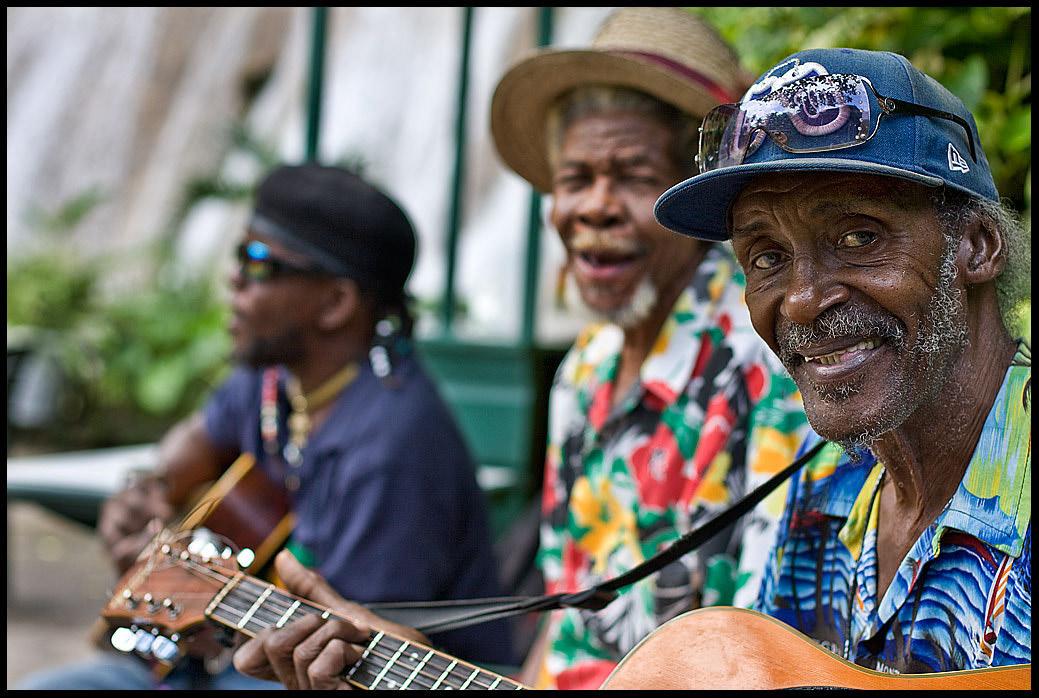
4 minute read
Is Calypso in the UK a dying art form?
Authors: Patrice Lewis & Kerlon Winchester
When I asked a few friends what they knew about Calypso in the United Kingdom, they all referred to the Windrush Era, when Calypso was reintroduced to the British public by Lord Kitchener, Mighty Terror, Roaring Lion and Lord Beginner in 1948. Some were even baffled that Calypso was still around in the UK with the rise and popularity of Soca, commonly referred to as the “Soca Scene”.
Advertisement
Calypso music originated in Trinidad and Tobago during the mid-19th century and spread to the rest of the Caribbean later in the 20th century. Calypso is a derivative of Kaiso which stems from West African music and was brought to the Caribbean by enslaved Africans. Kaiso was used to sing about their masters and Kaisonians would gather in “tents”, a practice which continues today. The art form is still very popular in Trinidad and Tobago and the Caribbean and conveys feelings with pun and innuendo, topics of political context and current affairs.
Calypso was first introduced in the UK around the end of World War 1 and was again made popular by The Greats mentioned earlier. Cheeky lyrics in the song by Lord Kitchener “My Landlady’s too rude, in my affairs she likes to intrude” expressed how the British Caribbeans felt and were treated when they came to Britain as citizens of the Mother Country and not as immigrants. Calypso was a way of making lighthearted fun of the dark times they faced. In the early 1950s, the average Brit was exposed to Calypso on a nightly basis on the current affairs programme – Tonight, on BBC television. Throughout the first half of that decade, Calypso dominated the public’s imagination with, Beginner, Terror, Invader, Roaring Lion and Lord Kitchener recording with music labels like EMI-Parlophone, Melodisc, and Lyragon. However, by the late 1950s, the appetite for foreign music veered off in another direction towards the American-influenced rock and roll demise of Calypso and Pop music.
In 1959, the first London Caribbean Carnival was held (inside St Pancreas Town Hall), a precursor to Notting Hill Carnival which provided a platform that gave calypso its heyday among the West Indian diaspora, though it was short-lived.
A few years later, in the early 1960s, Lord Kitchener returned home to Trinidad and Tobago, creating a long gap for the next British Calypso competition, until the arrival of Ashton Moore (a.k.a. Young Tiger, and later Mighty Tiger) in 1971. Musically, the era was dominated by Tiger and his rival Lord Cloak (Errol Brown). There was a deep sense that the Calypso artform was booming, with the emergence of more songs. However, there was no coherent structure, prompting Ashton Moore to organize the ABC (Association of British Calypsonians) in 1991 with the first official calypso tent a year later at the Yaa Asantewaa arts centre in Paddington.
There was a positive effect resulting from the emergence of Calypso Tents in the UK, as the association’s membership was widespread across the Caribbean, even having a period of female dominance from 1994.
The comfort zone for Calypso soon started to dwindle, as, with most arts and culture organisations in the UK, funding began shrinking fast, especially for the non-indigenous arts. Slowly the art form started to recede, as, within the UK, Calypso seemed like a niche genre. Compared to the Caribbean islands, where Calypso is a backdrop of their lifestyle, it is appreciated more. Whereas in the UK, isn’t shared on television or exposed outside of your circle. There is also the added challenge due to the art form’s inability to knock on school’s doors and the notion that Calypso is an art form for the older generation. The explosion of Soca, an offshoot of Calypso, which is intensively captivating, has been credited for the assumed demise of Calypso.
After much research and intense dialogue with persons within the industry, the evidence is clear. Calypso is not dead neither is it dying. However, it has been overtaken by the presence of Soca music, due to its engaging nature. Due to a lower bpm, is it fair to say Calypso is an art form only for the older generation? Certainly not. Is R&B a genre for the elderly? Are love songs only for our parents and grandparents? Is long-distance running a sport only for the elderly, because it’s longer and slower? Definitely not. Calypso music runs on a slower bpm but is equally entertaining as its relatives, Power and Groovy Soca.
We often act in ignorance to what Calypso truly is and its role in the Soca industry. Maybe if we take a moment to educate ourselves on the history of Calypso, there will be a greater appreciation for it. Perhaps if the younger generation paused for a moment and examined where Soca music was born, then there might be a greater appreciation for Calypso. As a result, we see the importance of The Association of British Calypsonians (ABC), who became a new legal entity in 2015 as the Association of Calypsonians UK and was later made more inclusive, by renaming to Association of Calypsonians And Soca Artistes (ACASA) in 2018.
Finally, before we become self-employed bandwagonist, it is essential to remember that in Trinidad and Tobago, the home of Soca music, most if not all the established artistes, for example - Machel Montano, Patrice Roberts, Erphaan Alves, all came through the Calypso Tents. Their journey started at the Junior Calypso Tent before successfully progressing to the bigger stage. Let us continue together to support our art form, representative of our culture, ensuring its life and sustainability for the younger generation to enjoy in the future.




